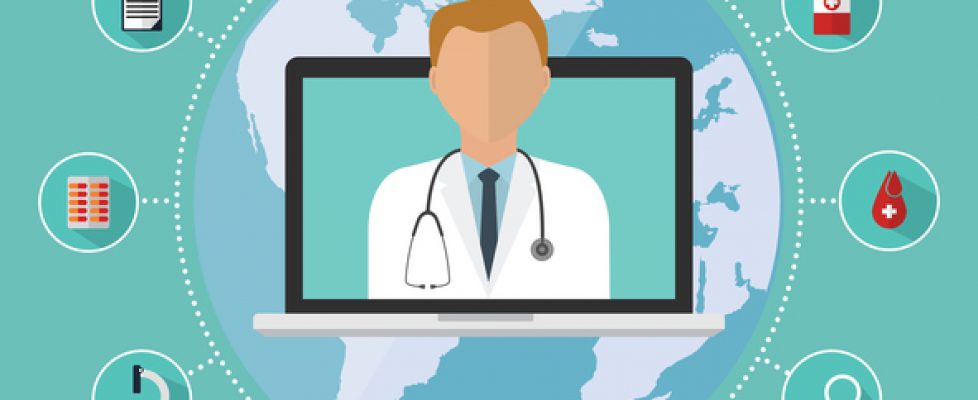Telehealth Policy Update
There have been several significant developments with regard to Federal government telehealth policy. These include the recently enacted appropriations bill funding the Federal government for the balance of the fiscal year, a Department of Health and Human Services Office of Inspector General data brief, the MedPAC annual report to Congress and statements by the Secretary of Health and Human Services.
Appropriations Law
On March 15, 2022, President Biden signed H.R. 2471, the “Consolidated Appropriations Act, 2022” [Public Law 117-103]. The new law authorizes the Telehealth Network Grant Program at the Health Resources and Services Administration (HRSA) to include providers of prenatal, labor care, birthing, and postpartum care services.
- H.R. 2471 contains provisions dealing with telehealth flexibility extensions.
- Removes geographic requirements and expands origination sites for telehealth services.
- Expands practitioners eligible to furnish telehealth services.
- Extends telehealth services for Federally Qualified Health Centers and rural health clinics.
- Delays the in-person requirements under Medicare for mental health services furnished through telehealth and telecommunications technology.
- Allows for furnishing of audio-only telehealth services.
- Use of telehealth to conduct face-to-face encounter prior to recertification of eligibility for hospice care during the PHE.
- Extends the flexibility allowing a high deductible health plan to cover telehealth benefit (for months beginning after March 31, 2022, through the end of 2022) pre-deductible and still qualify as a HDHP with a Health Savings Account.
U.S. Department of Health and Human Services Office of the Inspector General
The HHS Office of the Inspector General released a data brief entitled “Telehealth Was Critical for Providing Services to Medicare Beneficiaries During the First Year of the COVID-19 Pandemic”. The data brief provides information concerning the use of telehealth in both Medicare Advantage and Medicare fee-for-service during the first year of the COVID-19 pandemic. The brief is a companion to two forthcoming GAO reports: Certain Medicare Beneficiaries Were More Likely to Use Telehealth Than Others During the Pandemic and Medicare Telehealth Services During the COVID-19 Pandemic: Program Integrity Risks.
GAO’s Findings:
- Over 28 million Medicare beneficiaries used telehealth during the first year of the pandemic. This was more than 2 in 5 Medicare beneficiaries.
- Beneficiaries used 88 times more telehealth services during the first year of the pandemic than they used in the prior year.
- Beneficiaries’ use of telehealth peaked at the beginning of the pandemic and remained high through early 2021.
- Beneficiaries most commonly used telehealth for office visits during the first year of the pandemic
GAO’s Conclusions
GAO concluded telehealth was critical for providing services to Medicare beneficiaries during the first year of the first year of the pandemic. Beneficiaries’ use of telehealth services also demonstrated the long-term potential of telehealth to increase access to health care for beneficiaries. The data illustrated beneficiaries benefited from the ability to utilize telehealth for certain services, such as behavioral health services.
Medicare Payment Advisory Commission (MedPAC)
The Medicare Payment Advisory Commission (MedPAC) delivered its Medicare Payment Policy report to Congress. The report notes the physician fee schedule only authorized payment for telehealth services that were provided using an interactive telecommunications system that included two-way audio and video technology. The Public Health Emergency promoted CMS to waive this requirement for certain services. MedPAC noted Medicare claims have not always indicated whether telehealth service was delivered by audio-only or audio-video interaction.
Among its recommendations, MedPAC suggested “CMS require clinicians to use a claims modifier to identify all audio-only telehealth services, like the agency has done for audio-only telehealth services for mental health conditions and substance use disorders.” MedPAC wants this recommendation to apply to telehealth service coverage whether the services are temporary or permanent.
Home health in-person visits declined. MedPAC believes some of this was the result of telehealth but detailed information is not available. It noted the same for hospice. Throughout the report, MedPAC recommended that HHS require reporting of telehealth Medicare claims as it already does for in-person visits.
Federal Policy Outlook
During a press event, HHS Secretary Becerra stated a fairly broad endorsement of telehealth. He was quoted as stating:
We’re going to work as aggressively as we can to get as much authority as possible so that the providers of… telehealth have an opportunity to save lives…We would be really closing our eyes to a new form of quality health care if we did not expand authorities for telehealth to be available to Americans.
The data collected will go a long way towards guiding future Federal policy, especially as Congress considers making some aspects of the COVID-19 telehealth policy permanent. One key issue will be reimbursement. Providers, especially physicians, are advocating full Medicare reimbursement for telehealth patients. It appears a significant number of Members of Congress oppose this concept. The general belief is telehealth can save money. The other part is both the Congressional Budget Office (CBO) and MedPAC generally assume utilization will grow substantially. The outlook for future telehealth policy changes will largely depend on the results of data collection.

